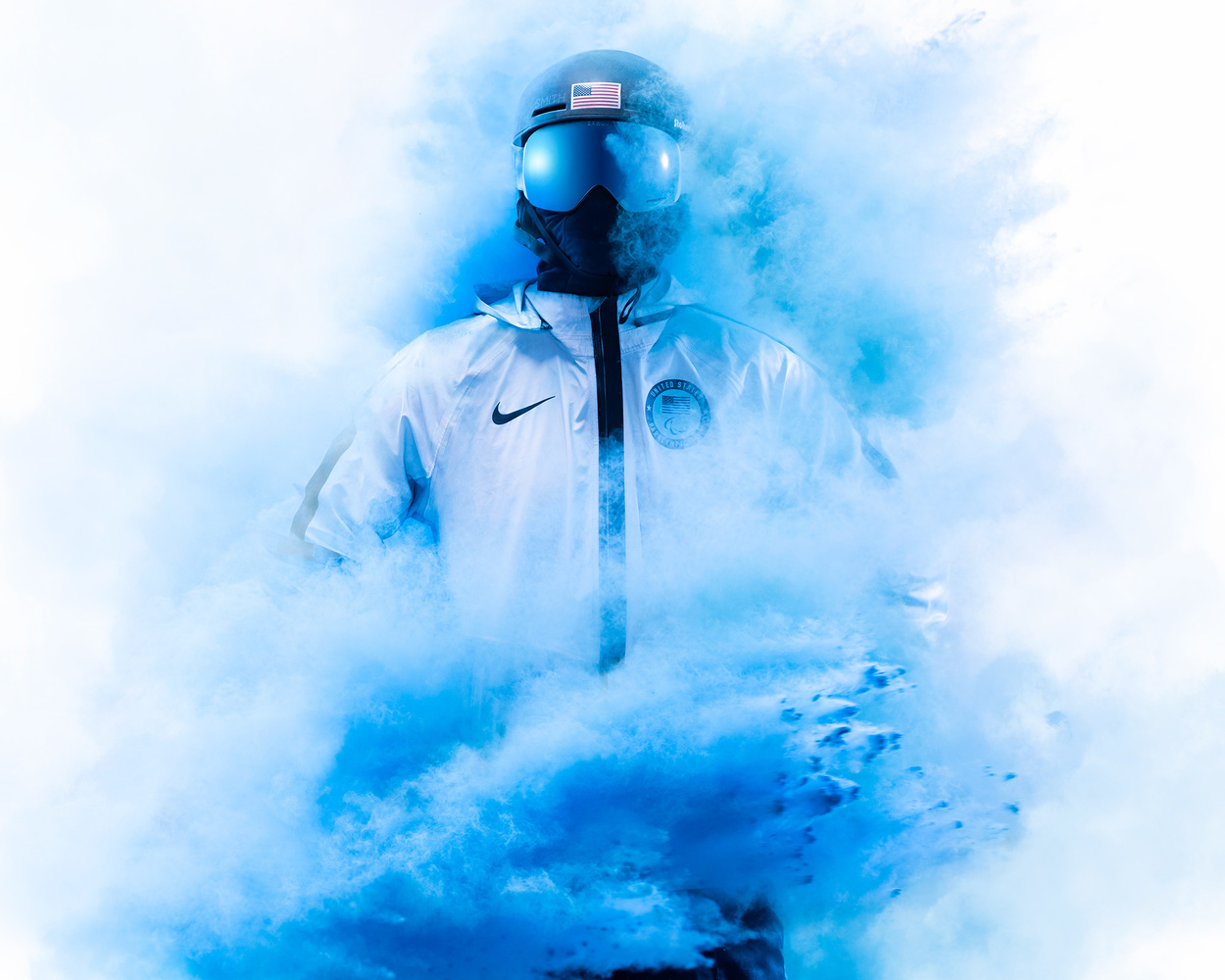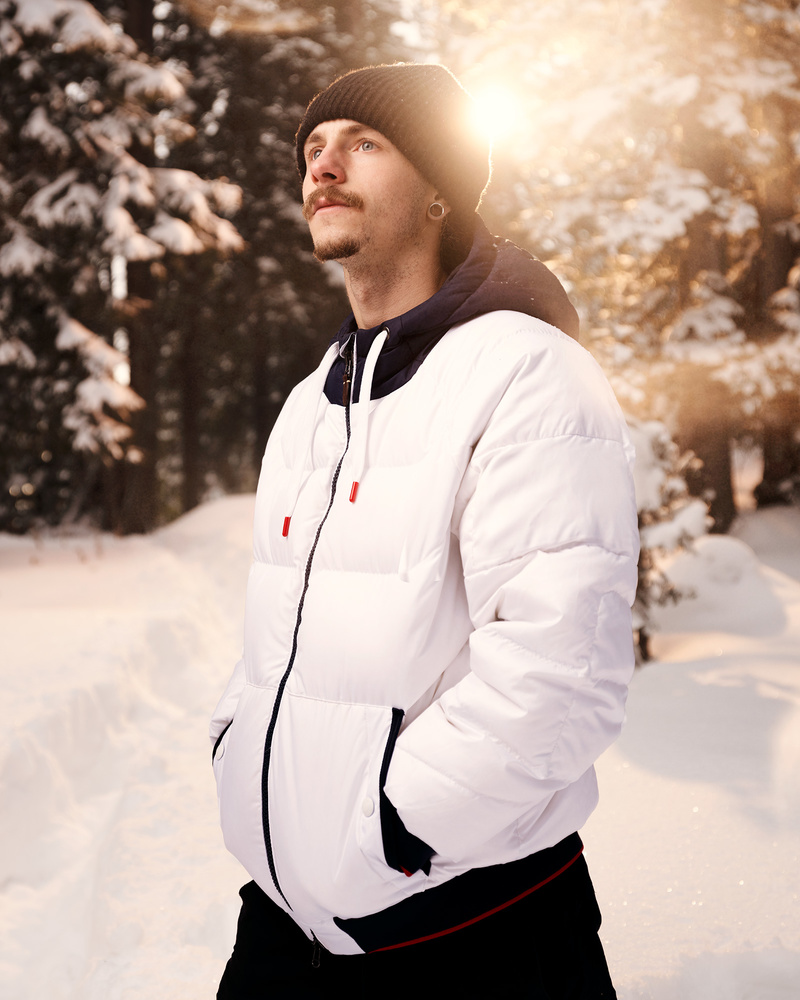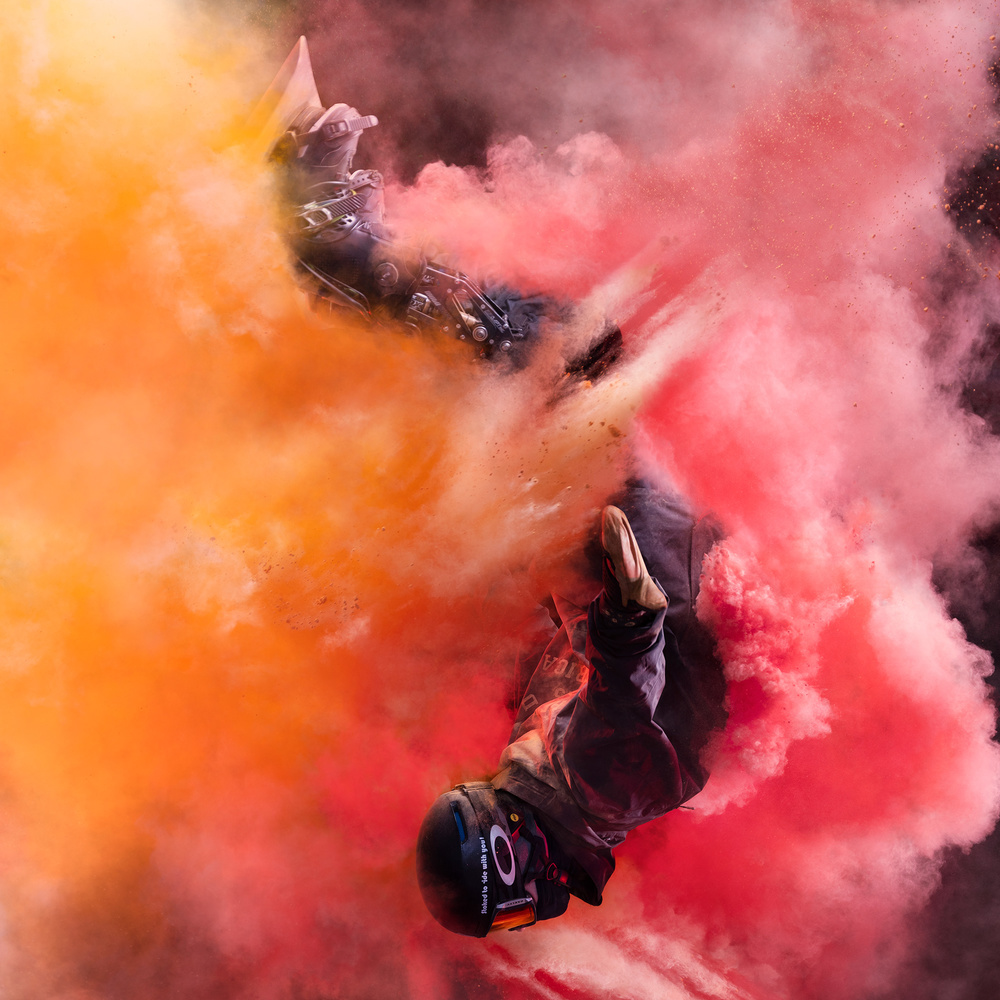Photographer Aaron Anderson has done it again, and this time, it’s with Paralympic gold medalist Noah Elliot. The collaboration was an incredible process, though Anderson admits that it might also possibly be one of the hardest productions they’ve worked on.
Anderson first met Elliot through some friends who are also athletes at the Olympic Training Center and sat down for a coffee to discuss how he could showcase Elliot’s story. It’s an incredible story, and once they started putting concepts together, Anderson knew he needed to bring more people along to tell it. That’s when he reached out to Fujifilm to see if he could use the GFX 100 to bring it all to life.
The idea was to tell Elliot’s journey in “scenes,” to highlight some of the defining moments leading up to his gold medal and where he is at this point of his life. It was very much like directing, but Anderson only has one frame to tell each part of the story, and he loved the challenge of that. It’s also really fun for me to hear these stories and then be trusted to tell them in a way that they feel good about. Olympic and Paralympic athletes are some of the most talented, resilient, and mentally strong humans you’ll ever meet, and it’s an honor that I get to be a part of the journey.
After Anderson and his team had concepts for the different scenes, they started to work on production. There was not a lot of budget on this one, so Anderson knew he needed to be scrappy with how they did things. He did fortunately have a producer for part of it, which was immensely helpful, but they also pooled resources among everyone to find locations and get permits to shoot. There were a few things that Anderson had never done before that they tried on this shoot, like walking down a ski hill with lighting equipment.
According to Anderson: “It’s always good to feel a little uncomfortable; it means I am growing. One of the things I say often is that you should be uncompromising with your vision, accomplish what you set out to accomplish, and don’t cut a bunch of corners just so you can shoot. Often, it takes longer than I want. I spent around 30 hours in Photoshop for the image with all the hands, but I’m not okay with it being average after all the work that went into it. So many times, you’ll hear me talk about pre-production, and it’s so important to emphasize that these things don’t just happen. We did five shoots in one week all over Colorado, and every one of them had a ton of moving parts; it’s not impossible, but it does take effort. ”
Something Anderson hasn't really talked about before is pre-visualization, which is like pre-pre-production for him. He learned about pre-visualization when he played soccer, and it’s something he does before every shoot. It’s more than just visualizing success, which he does as well, but for him, it’s also pre-visualizing how the shoot will go and the lighting setups that he is going to use. This is one of the key ingredients to having a smooth day on set for him, because you know exactly what you need to do when you get there. Sometimes, Anderson will sketch out his lighting diagrams, and he will try to share each lighting setup with his whole team before they get started so things remain fluid. “Find what works for you: drawing lighting, computer programs, sitting quietly Make sure you give yourself the time you need to do that. Sometimes, I will head to a coffee shop, put on my headphones, and just sit for a while. I’ll think through the day, the lighting, the final images, and get myself prepared both mentally and emotionally for what they’re about to do. It may sound weird, but it’s really changed the way shoots go for me, and if I don’t have time to do this, it definitely changes the feel of our day and not in a good way.”
After months of planning, getting locations and driving all over Colorado, this is what Anderson and his team came up with.
Equipment List
- Elinchrom 49” Deep Umbrella with Diffuser
- Elinchrom Large Gridded Soft Box
- Elinchrom Small Gridded Soft Box
- Elinchrom Skyport Plus HS (Needed to achieve High Speed Sync in the images)
- Benro Mach 3XL Carbon Tripod
Lighting Setup
The Moment: Hospital Portrait and Room
It all started in a hospital bed for Elliot, and it was really important to Anderson that they set the mood for their series with these images. They rented a simulation hospital room and were able to create a really moody vibe using gels to make it feel like a TV was lighting Elliot. Gridded boxes are super helpful for shots like this, so you can control the spill of light and only cast it where it needs to go. On the close-up, they had one large gridded box acting as a “TV” with a blue gel, and a small gridded box providing fill for the background with a cyan gel. They also added a 53” Octa to the scene with an amber gel to give it a pop of color. There was a really interesting observation window that they ended up bouncing light through.





Inspiration: In the Woods
Elliot grew up in the city, riding skateboards, and until shortly after his amputation he hadn’t really spent any time in the mountains. After that moment in the hospital, he was able to spend time in the mountains; this was the next piece of the puzzle. He told Anderson his first time in the mountains really fanned the flame for him to continue on his journey, and they wanted to portray that moment in an image. Of course, it was super cloudy and gloomy the afternoon they had planned for the portrait in the woods, so they had to make their own sunset. Anderson used a 7” reflector with a CTO in the trees behind him to feel like the sun was breaking through. Then they put a 49” Deep Umbrella with a diffuser camera left to provide some soft fill. If you’ve followed Anderson’s journey at all, you would know that Anderson loves putting lights behind people and shooting them at the camera.


Community: The Hands
While talking about his journey, something Elliot said was that he wouldn’t have been able to accomplish much without the people around him. Anderson finds that this is often the case: there are so many people working behind the scenes to help these athletes succeed, and so many times, they never get any credit. Once they had decided to include this, Anderson had the crazy idea to show Elliot being lifted by a bunch of hands, showing his support and community. It was awesome to have so many people come to the shoot, but it wasn’t nearly enough, so in the end, Anderson had to move people around Elliot in a large group and put all the pieces together in Photoshop. It was over 30 hours and hundreds of layers, but Anderson thought the end result was well worth it. His main goal with lighting was to keep it dramatic and make sure Elliot was lit more than the hands. They used a 75” indirect octa with a diffuser way up high and pointed toward the ceiling to feather it off the hands. They also had two large v-flats opposite the octa for fill, so things didn’t go black. Anderson wanted to add some flare to the image, so they added two 7” reflectors, one with CTB and one with CTO, to create a little visual interest in the corners. It is worth noting that the camera was mounted on a rail above Elliot and Anderson was firing it from Capture One down on the ground. Anderson used a Kupo clamp with a Benro ball head so he could adjust the level and angle of the camera above him. Anderson also built a platform for him to lay on and put black fabric over it; that way, they didn’t have to hold him up for the entire shoot! 

The Work: Shredding the Mountain
Naturally, a big part of Elliot’s journey is training on the mountain. 10,000 hours is just the beginning; many of the Olympians and Paralympians Anderson knows literally eat, sleep, and breathe the sport. There were many challenges with this particular set of images; they needed to have permission to shoot at a ski resort, pack lighting and gear, and Anderson didn't snowboard, so he would have to walk. His goal was to bring a few lights and move down the mountain while slowly shooting and lighting along the way. They packed everything up into a couple of bags, Anderson’s trusty Shimoda bag, which is basically a backpacking pack designed for photographers, held the camera and some lights, and they had another Tenba backpack that held the rest for the assistant. In the end, Anderson used the 39” Deep Octa for their time on the mountain with the ELB 1200 so they had enough power, then Anderson used the 39” mixed with a 7” reflector for when they were on the halfpipe. It’s simple lighting, but it’s more about planning and execution with a shoot like this. In the end, they were able to get a shot of him with Steamboat Springs in the background, the place where all his training began, and Anderson was pretty stoked about that. 


The Gold: Colored Powder
Every time Anderson uses colored powder, he says it’s the last time. Well, he lied. Elliot won a gold medal at his first Olympics, but taking a picture of him with a gold medal really didn’t feel right for the big moment of his story. It’s about more than that, and it most certainly isn’t the end of the story. Because of that, they decided not to shoot with his medals at all; instead, they did a crazy shoot with colored powder on a trampoline outside! The last time they used colored powder, Anderson did it in his studio, which he does not recommend at all! Luckily, he had a friend who has a trampoline outside, and it’s down in the ground, which is much safer and makes lighting much easier. On the first set of images, they set up a black background and used orange and red powder. They put a 53” Octa overhead on an ELB 1200 to create shape, a 75” indirect octa behind the camera for fill from the front, two deep umbrellas with diffusers on the sides for fill, and two 7” reflectors with red and orange gels as rim lights to give shape and color to the powder; these were all on ELB 500s. The second set of images is basically the same lighting, except they added a white background and put two ELB 500 heads on it to make it really white. Anderson also switched the gels to blue and green to match the powder for that set. “Something to think about with colored powder is to over-light the scene a bit. Remember that when the colored powder hits your subject, it will block a lot of light, and you need to make sure you account for that.” They ended up adding the umbrellas after a test shot, because the powder was cutting the light so much.






Closing
There were definitely moments during the week of shooting where Anderson wondered how it would all turn out, and they were all exhausted from the schedule.
I was constantly reminded that everything doesn’t always go as planned, and sometimes, life will throw you some pretty nasty curveballs, but the way you choose to respond is everything. You can choose to have a bad attitude and say the world is against you, or you can find inspiration in the mountains and purpose in loving people in the midst of hardship. Working with these athletes is incredible and a constant reminder to me that we only have this moment; we are never promised more than that. I hope that regardless of what you think of these images, they’ll inspire you to get out there, to live each moment with verve… but most of all, to be awesome!
I want to say a huge thank you to my team, especially Adam and Kayla, who have spent hours and hours in cars and in some pretty gnarly conditions to help me make these pictures. I truly couldn’t do what I do without the community I have around me! Also, thank you to Gabe for his video skills and all my friends who lent a literal hand for our shoot!
For Anderson, this was a journey and a good reminder to keep moving forward. As should you!
Images used with permission of Aaron Anderson.







Amazing images; amazing story! Thank you so much for sharing! This made my day.
Thanks Jeff, so glad to inspire and have an awesome day!
how a photographer shot something with a camera and some lights. Nothing special about the camera made these possible. Other than the title it is a good article, very informative and well done.
Glad you found it informative!
Excellent in all aspects. Shows success isn't happenstance.
Keep on pushing!
Thanks so much Matthew! I'll keep on pushing as long as I'm breathing :)
Wonderful work. Great read and inspiration..
Always stoked to inspire! Thank you!